Belarus' Endangered Buildings: Why Some Are More Vulnerable Than Others
Belarus is not a country whose practice of preserving architectural heritage can be called outstanding. Rather the opposite: we often hear about unique buildings being demolished or renovated in a tasteless manner. Plaster covers up decorative elements and artistic works of previous eras. But even in these circumstances, some groups of architectural objects are more endangered than others and have fewer chances to be saved. What objects belong to this group? Why are they at greater risk, and how the situation may develop?
As time passes, it becomes clear that in the near future the destruction of cultural heritage will continue, and a lot will not be saved despite the appeals or proposals for granting them a protected status. Nevertheless, it is important to understand that not all categories of architectural and cultural heritage are equally vulnerable. The group of architectural objects that are most at risk, which are referred to as "vulnerable heritage" in this text, changes over time, and sometimes becomes the opposite of what it used to be.
Vulnerable heritage is cultural property that, due to the lack of proper protection or incorrect interpretation of protection as such, can be destroyed or reconstructed in a way that will lead to the loss of historical and artistic value, authenticity of the design, materials, or environment.
Many years of extensive experience in protecting cultural heritage from scientifically unjustified changes and physical destruction allows us to identify categories of objects that suffer most from the lack of appropriate legal protection (and control over protection as such).
Ordinary Buildings as the Foundation of the Historical Environment
The most massive irreparable losses occur in ordinary buildings, including those in cities and towns, as well as former settlements. People engaged in construction have little or no appreciation for architecture, and even less for the need to protect it. They facilitate new construction in order to support continuous operation of multiple construction organizations, or demolition, first and foremost, to absolve themselves of responsibility for possible accidents. It is a tough task, to say the least, to find a place for heritage protection among such important economic and social motifs.
Many people in Belarus still have unrealistic (perhaps influenced by the easy access to Western countries) expectations of historical development. They think that every historic building should look like the Pats palace or at least a mansion of a wealthy industrialist, adorned with the finest artistic elements. But the reality is that most of the buildings, even in the historical centers of European cities that are considered good examples, consist of architecture that is considered "of little value" in our country. They create the atmosphere and the context for the unique buildings to stand out and preserve the spirit of the place. Understanding of this very function of preserving this atmosphere and context is completely missing in Belarus.
Hopes are often pinned on the regulations concerning protection zone project documents, which are necessarily developed for each historical or cultural property (or several at once). Thus, many protection zone projects covering the most significant objects and historical centers distinguish "valuable" buildings from "ordinary" ones, while preservation of the latter is intended to support the overall perception of historical and cultural values.
Nevertheless, hopes put on such projects rarely materialize. Firstly, not all scientific supervisors who develop these protection zone projects approach their work in good faith: many simply work off their modest salaries in a formal manner, with little or no thought of including the cultural objects surrounding the main cultural value into the project. Secondly, the formulations that are sometimes used even by those who work in good faith are not perfect and have shortcomings that local authorities and developers make use of. So, for example, the protection zone project for the historical center of Grodno, which looks good at first sight, defines many buildings in the city as valuable, but does not contain any norms for the development regulation zone regarding these buildings. That is, cultural property is identified, its significance is clear to specialists, it is included in the project, but it is completely unclear what to do about it. And as long as this is not stated in writing, one can do anything. This is exactly what happened in the course of development of the project for reconstruction of the barracks in Shchorsa Street, which completely destroyed all the outstanding features of cultural values.
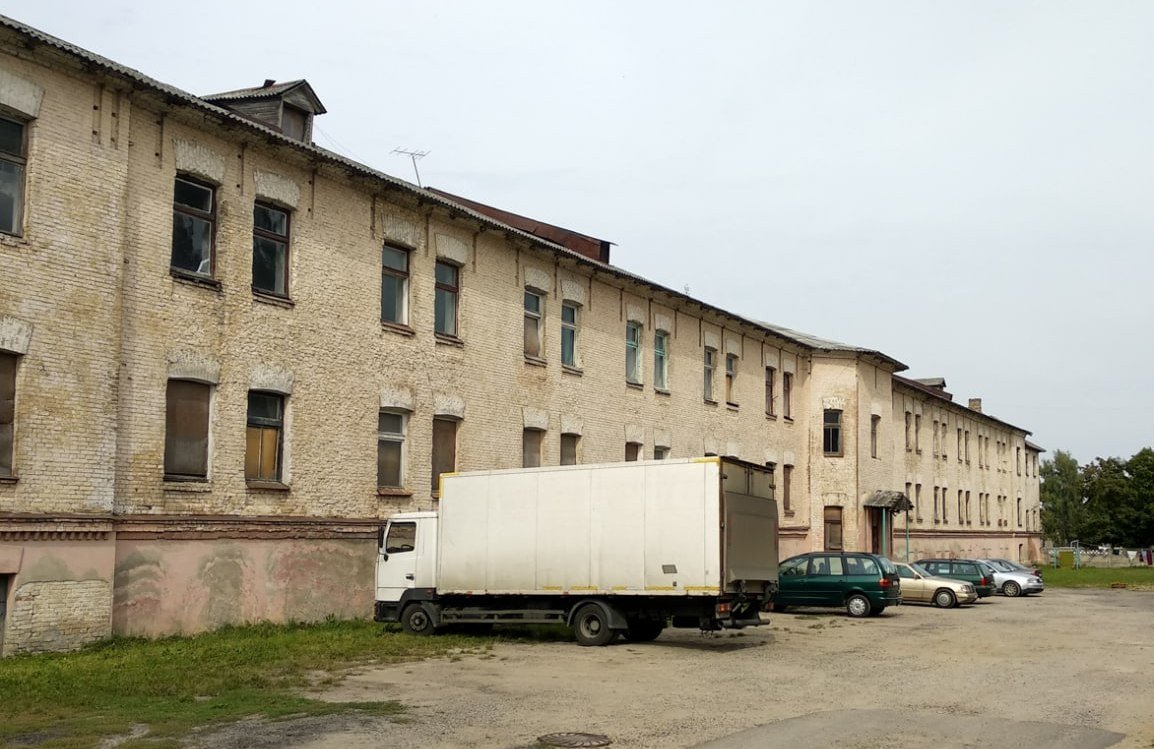
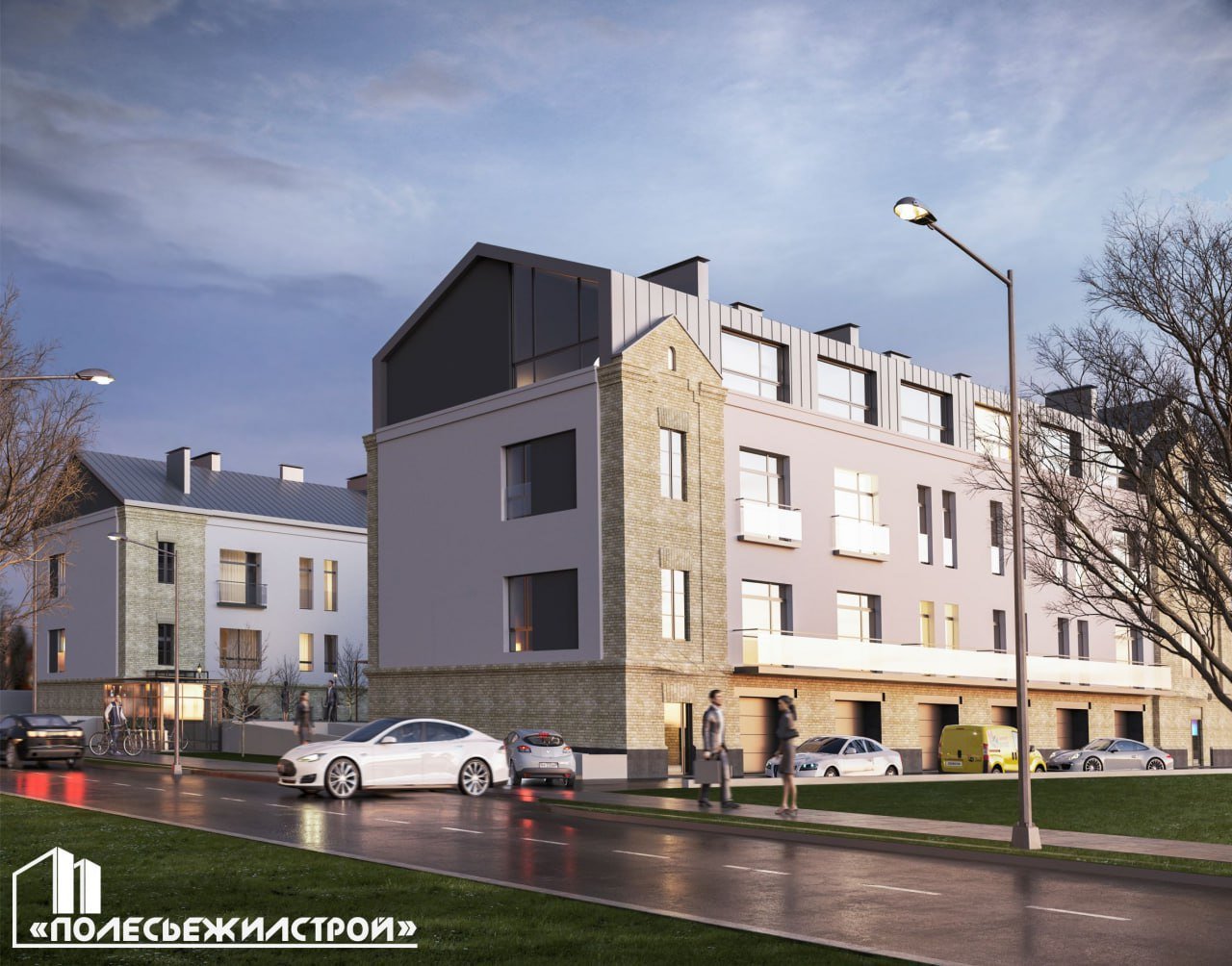
Thirdly, there is criminal negligence of officials, who are more or less in the know about historical and cultural values but are not informed about the regulations and protection zone projects. Thus, half of the buildings of the O'Rourke estate were destroyed in Useliub. Destruction began simultaneously with the approval of the protection zone project and continued in subsequent years, although regulations prohibited demolition of these buildings. Local authorities involved in the destruction turned out to be capable only of mocking answers to appeals, as if they were not responsible for preserving the historical and cultural heritage in the territory of the Novogrudok district. The destruction of brick buildings, also defined as ordinary ones, happens en masse in Brest, too, although it is described in detail what can be done with them and what cannot. And in Mstislavl, a synagogue was destroyed, while the local executive committee, despite the existence of a regulatory document clearly stating a ban on destruction, said that nothing terrible had happened and the building was of no specific value. Enumeration may continue forever. That is, the de facto value of cultural heritage in Belarus is determined by officials, but they bear no responsibility for this.
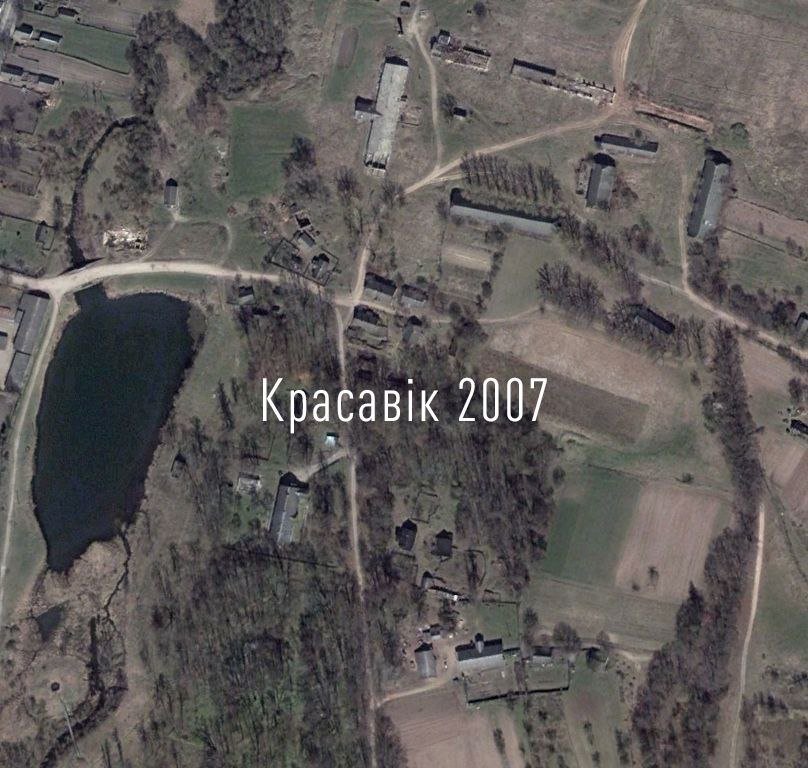
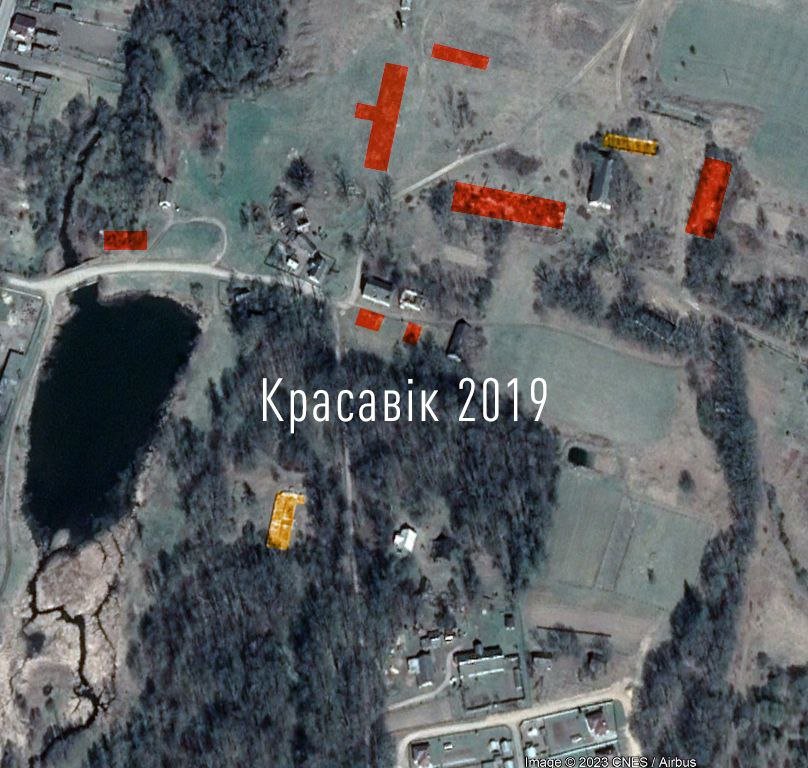
The Invisible Wooden Architecture and the Fight Against National Complexes
Wooden buildings are viewed as even less necessary by Belarusians, be it an ordinary dweller in the street, or a high official in the sphere of culture. Many attribute this to the "Collective Farm trauma" of the population's majority, who experienced aggressive urbanization and were made to move massively from villages to cities. They say that, having failed to adopt urban culture, since the native city dwellers were too few to assimilate such a large influx of rural migrants, the former countrymen only learned the superficial difference between the village and the city: stone architecture and less greenery. At the same time, wooden houses became an unwelcome reminder of their own recent impoverished past, which also explains the officials' aversion to trees in cities. This approach seems far-fetched to me, because neighboring Lithuanians and Latvians are village nations to the same extent as Belarusians. Nonetheless, they not only preserve huge arrays of wooden buildings, but also renovate and take them under protection. AN example thereof is Žvėrynas in Vilnius, located literally across the river from the historical center, and listed as a UNESCO heritage site. One may wonder why also protect these old houses if there is an internationally recognized historical center? However, we see that Lithuanian specialists do not resort to such erroneous logic.
A minimum number of wooden buildings have been taken under protection in Belarus. For example, Mogilev, which, according to publications on art history sources, has its own school of "Mogilev carving", can boast only one wooden (more precisely, wooden and stone) house with an official status of a historical and cultural value. Meanwhile, the historical center of the city is densely surrounded with wooden buildings on all sides. There are many houses from the early 20th century that have been preserved and are richly decorated with architectural carvings, but their existence is ignored. Demolition of the best-preserved examples of local architecture regularly takes place. Earlier, during the time of Director Alexei Batyukov, specialists of the Mogilev History Museum took away valuables and fragments of decor from buildings to be demolished, but even this cannot be considered preservation of architectural heritage, since the integrity of the monument was lost and can never be restored using fragments only.
In 2021, the Vetkovsky Museum in Gomel carried out a rescue dismantling of a unique modern bracket porch with a bow-shaped canopy. The house itself in Galina Dokutovich Street, 24 was demolished.
Whole streets of wooden buildings are being destroyed in Gomel. The artistic value of these buildings is so high that they feature in all studies on Belarusian folk architecture, but the city, which actively replaces them with multi-story residential buildings, has no interest in this architecture.
The example of the historical center of Bobruisk, recognized as a historical and cultural value quite recently, is very illustrative. This status was granted to it in November 2022, when the Ministry of Culture insisted on it, following the appeal of concerned citizens. A year before that, the local authorities had claimed that there was nothing of value in the city to protect, and then suddenly a whole historical center emerged out of thin air. However, this historical center did not include even half of the historical buildings, which had been identified and marked on the historical and architectural plan, which is part of the general plan of Bobruisk, a few years before. And not a single wooden building was included in the territory of the historical center, although a lot of them were in good condition. Back in the summer of 2021, when the inventory of buildings was drawn up, one of the wooden buildings belonging to the local gymnasium was omitted from it. This building was still present on this plan, but it was not remarkable from an artistic point of view. Albeit it had historical significance for the city, that did not save it.
Creation of skansens is considered one of the means of preserving wooden buildings. Skansens are open-air museums, where historical buildings are transported, if their preservation at their former location is not possible. There are several small private skansens in Belarus and only one state-owned. The latter belongs to the Belarusian State Museum of Folk Architecture and Everyday Life, which is based on the regional principle. However, the problem of this museum is that due to the lack of funding, entire regions, namely, Eastern and Western Polesie, Ponemonie (that is, half of Belarus) are not represented at all, while others are only partially represented. Central Belarus enjoys, perhaps, the most thorough representation. The objects themselves, after decades of being stored in pieces, have probably crumbled to dust by now. Also, this museum is engaged almost exclusively in collecting objects of rural architecture, not paying attention to urban architecture at all. The museum has a branch in Severny Lane in Minsk, but it has no branches in Gomel, Mogilev, or Novy Svet in Grodno, where wooden architecture is much more valuable in artistic terms.
Architect Evgeny Lokotko draws attention to the need to create a network of skansens in the regions. This is important, because it is quite strange that one can only see the authentic architecture of one's region by going to another one.
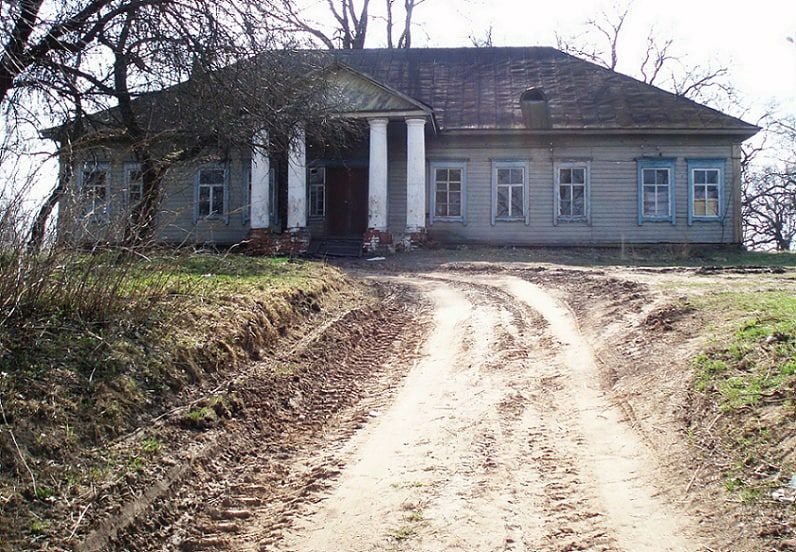

Namely, it refused to transport to its premises an old house from Karabanovskaya Street in Mogilev, nor did it admit the Orlitsky estate from the village of Dvor-Gomel in the Polotsk Rayon, hiding behind some approved general plan.
The latter case was especially remarkable. In fact, scientists from the National Reserve in Polotsk almost got this building recognized as a historical and cultural value. But when the proposal reached the Center for Research of Belarusian Culture, Language and Literature of the National Academy of Sciences of Belarus, they gave a one-line(!) rejection. They said that the estate was too dilapidated to be given a protected status. It should be noted here that the state of cultural heritage is not listed as a criterion for granting a protected status. Nevertheless, the Vitebsk Regional Council for Historical and Cultural Heritage, relying on this conclusion, refused to grant this status to the building. However, it communicated the opinion of its individual members that the estate should be preserved to the local authorities. A few months later, the estate was demolished by the latter.
This case shows that two institutions, which could and should have helped save the wooden monument, either did not value it or did not want to bother.
We barely have any idea of the demolitions that take place in villages and small towns. In most cases, wooden buildings escape the attention of travelers, nor is there a movement for the preservation of wooden heritage. Recently, a few Facebook groups like "Ліштвы" have appeared, as well as the "Дрэва.бай" website, but we cannot say that they are actively engaged in the protection of architecture and active promotion thereof. They rather deal with mere fixation, although they can potentially give birth to a protective movement.
Industrial Heritage
The third important vulnerable group of historical and architectural heritage is the industrial heritage. It should include both industrial buildings (factory workshops) and related technical structures that may not be directly connected with production but used to support industrial development in the past: water towers by the railway, old power line poles, dams and much more.
The fact that these buildings and structures may be of any other value than purely utilitarian is a shocking discovery for many. Of all the listed heritage, it is the industrial one that is perhaps the most vulnerable. This is due to several factors that are derived not so much from the current level of development of society, as from the very essence and original purpose of such architecture.
Industrial architecture emerged rather late, since the industrial revolution, which originated in the last third of the XVIII century, covered the whole world only in the first half of the XIX century. There are industrial monuments of this period in Belarus, but in part they are represented by rare manufactory buildings or breweries and mills attached to manor houses. Almost throughout the entire XIX century, the Belarusian lands remained exclusively agrarian, devoid of any significant industrial development, therefore, industrial facilities of this period constitute an insignificant part of the overall heritage. It is even more painful to see the losses in this category.
In absence of its own expressive language, the architecture of industrial structures for a long time copied the architecture of residential and public buildings, so all the criteria of value applied to the latter shall be applied to the industrial heritage, too. Yet, industrial architecture took a different path since the start of the 20th century. It became less ornamental and more functional. It did not lose its expressiveness, though, and remained just as expressive as constructivism compared to historicism. Nonetheless, most people only value the industrial heritage that resembles the non-industrial one.
It is not only the architectural decor that makes the industrial heritage valuable: the fact that it is important evidence of the city's, region's or country's industrial development adds a lot to its significance. However, this idea has found almost no response in society. But if you can add "the first" to the name of some object, say, "the first power plant", it makes the value a little more obvious. Still and all, this criterion is also wrong, as the second, third, or tenth power plant may be much more valuable than the first one. The destruction of evidence of the country's industrial development helps to consolidate the perception of the country exclusively as a rural, backward territory, divorced from global trends.
Just as the mass destruction of churches and entire neighborhoods in Soviet times left us feeling that our culture is somewhat secondary in nature, the destruction of industrial heritage leaves us with a complex of inborn economic backwardness.
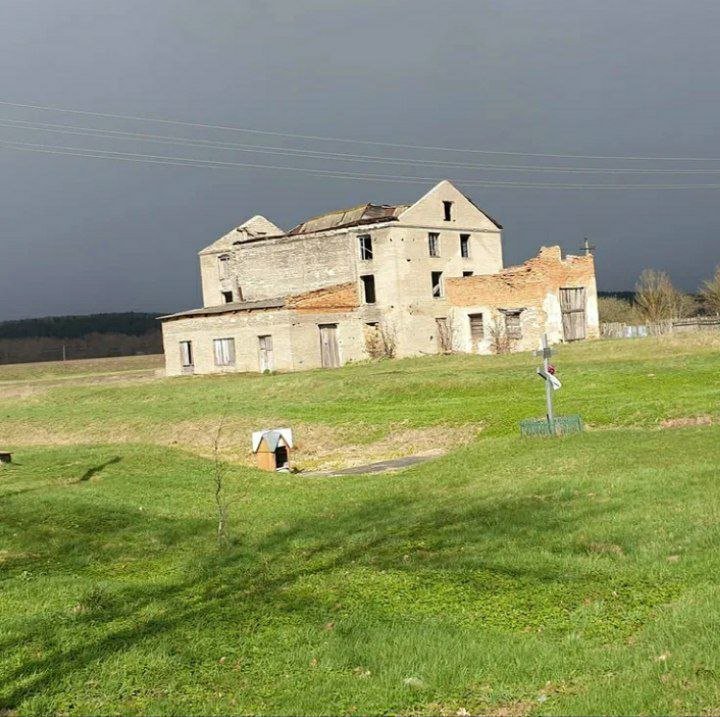
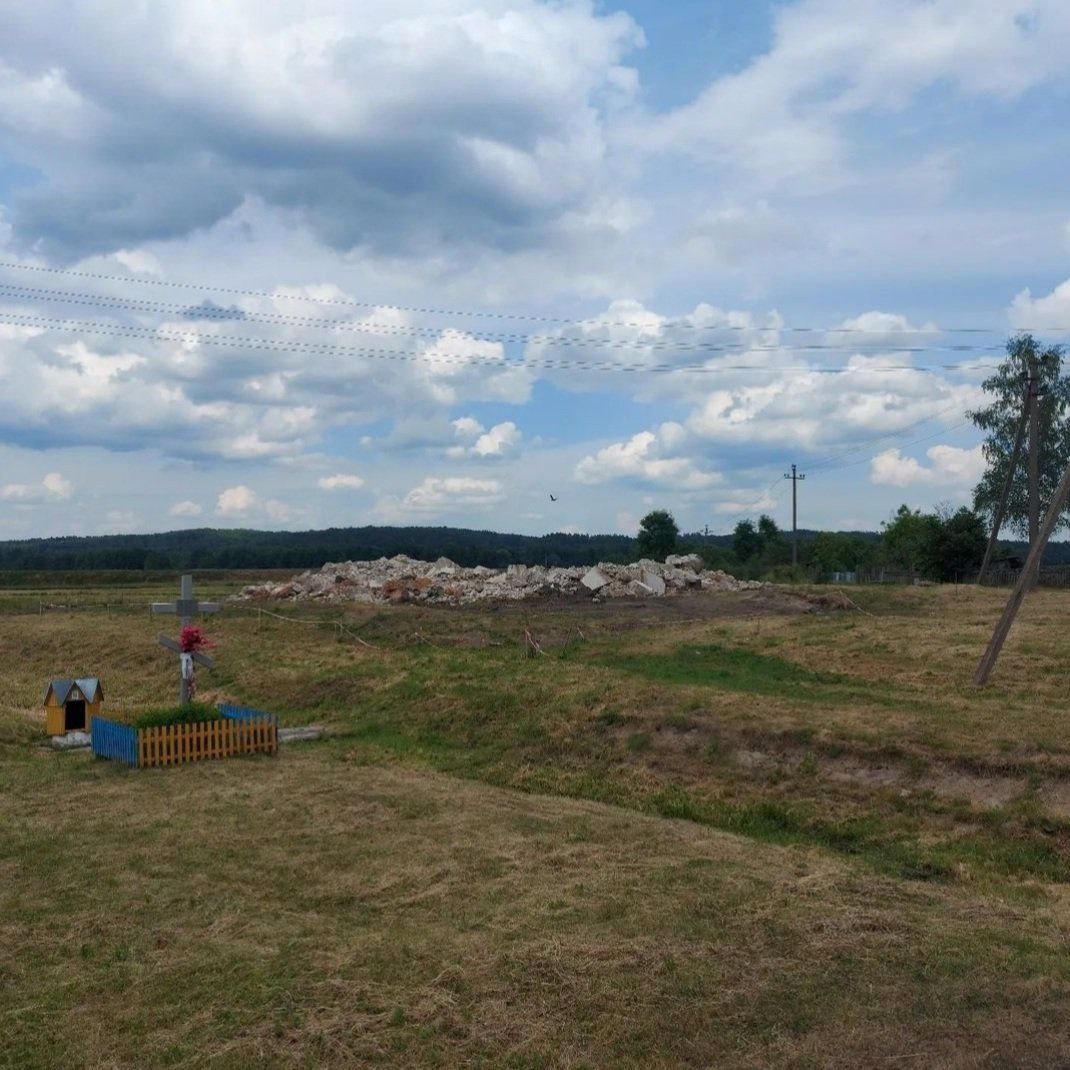
The second factor, the one that follows misunderstanding of the value of material evidence of industrial development, is the lack of access to industrial facilities for visitors and exclusion of those facilities from tourist routes. Very often the lack of access to some industrial monuments, such as farmyards at former estates, is due to their remoteness from the main roads. On the other hand, in most cases these objects continue to be used for their intended purpose or are located in the territory of existing enterprises, access to which is severely restricted for well-known reasons.
An interesting case is that of the complex of a cement plant in the urban settlement of Krasnoselsky in the Volkovysk Rayon. Krasnoselsky is primarily known for chalk quarries with water reserves of an unusual color, and not at all for its historical heritage. In recent years, production has been moved to another site, and a sweep has begun on the territory that contains historical objects. At the same time, the territory was not controlled so strictly any longer. After the post-war workshops were torn down, a huge "industrial basilica" from 1914 was revealed underneath. It was built to supply the war effort during the First World War. Its facades were designed in a high-quality Northern Art Nouveau style, which is quite rare in Belarus.
This object had not been introduced into scientific circulation, nor had it ever been mentioned in scientific publications. It only became known because industrial heritage has another important feature − appeal. This is something that is still overlooked in our country, but in the West, it is a source of income for regions that suffered from massive deindustrialization Abandoned buildings always attract people, even if there is nothing there but rotten floors and streaks on the walls, but abandoned industrial sites are completely different. Firstly, they are much larger than human scale, which is determined by the production needs. This alone creates a powerful impression. Secondly, industrial architecture is full of remnants of technologies and machines, the purpose of which the visitor can only guess. Another reason why they are so captivating is the machinery, with its partly movable parts and its unusual (futuristic) appearance. It makes people wonder what it was like when it was in operation.
The rear facade of the main building of the Krasnoselsky plant, built in 1914
Even though the Krasnoselsky plant did not have to build anything on the old site, and despite our arguments about its historical importance related to the two World Wars and the post-war development of the republic, its uniqueness in scale, construction time and architectural merits, as well as its great potential for industrial tourism, which would bring extra income to the region, the oblast officials and the Council for Heritage saw no reason to protect the property of this state-owned enterprise. For the time being its demolition is either in progress or completed already.
They promised to keep only the water tower, that is, a hundredth part of the entire complex. By the way, water towers do hold a special place among industrial structures, which, in my opinion, is due to the "romanticization" of towers. Although they are no longer useful (they have lost their original function, and it is quite hard to adapt them), they take up little space and remain a striking feature in a certain area that the locals have a fondness for, so they are seldom disturbed.
More precisely, we see few examples of the demolition of such structures, because, as noted above, industrial areas are usually closed to visitors, often protected by military secrecy, so they cannot even be photographed. Such areas include the railway infrastructure, where a lot of interesting objects have been preserved, but control over them, not to mention their protection, is burdened with legal restrictions. It is important to remember that in order to prepare a building for the status of a historical and cultural value, it needs to be photographed from all sides. Obviously, the case becomes hopeless when one needs to negotiate with the owner of the enterprise, who is not interested in the status and suspects that the visitor is a crank or a spy, or has something to do with law enforcement agencies. Therefore, industrial heritage is largely deprived of any legal chances to be protected.
Soviet Modernism
The last, fourth category of vulnerable heritage can be titled ‘Soviet modernism’. It covers a fairly long period of time from the 1960s to the 1990s. The problem with this period in architecture is rooted in two things: it is still too young to be unambiguously perceived as heritage that requires protection, and also carries a heavy stigma of politicization, expressed by a single capacious term - "sovok".
Even though architecture of the same kind appeared in Western countries, and many monuments of this period have already been taken under protection, for the Belarusian layman, Soviet modernist architecture remains totalitarian, typical, devoid of individuality, worthy only of destruction and building anew. Indeed, for a long time modernism dominated the Soviet state orders (the state was the only customer, which is not surprising), not surprisingly the population got very tired of it. Therefore, immediately after the collapse of the USSR, people rushed to extremes, clumsily using long-forgotten decor, bright colors and building non-functional, overly complex architecture, which we now call postmodernism.
One of the best examples of (post)Soviet modernism, the Palace of the Republic, became a victim of universal hatred due to its untimely construction and the political circumstances.
The victim of this reversal was, for example, the Palace of the Republic in Minsk, a quite advantageous object in terms of its dimensions and architecture, which is still hated by many, including professional architects. The trouble is that it was a Soviet project in the spirit of old modernism. Following the collapse of the USSR it turned into a long-term construction, which was completed by Lukashenko, contrary to the opinion of the opposition, still strong then, which suggested simply filling the foundation.
Here is an illustrative pamphlet from 1989 by art critic Valery Buivol, who appears here more as a member of the BPF "Revival", and not as a scientist. He dramatized the situation around the "main new building of the Republic" by comparing it to Kiev's main post office and calling these two buildings brothers. He also shifted the focus to Stalinist architecture, which "continued to kill". Finally, he used words that touch something sacred for Minsk residents: ugliness, alienness, inhumanity, "sarcophagus". The choice of such a strange word as "sarcophagus" (why not "mausoleum"?) may be explained by the analogy with the concrete structure over the fourth power unit of the Chernobyl nuclear power plant, which was built in 1986 after the explosion of the 4th reactor. Again, it holds an ideological, anti-Soviet stance, and not just focuses on architectural imperfections.
It should be noted that during the 2010s, our cities lost most of the public and residential modernist architecture, since these buildings were still actively used for their original purpose, but already required major renovation. Such renovation, in turn, is performed based on the principle of increasing energy efficiency at the lowest costs. This is coupled with the fact that repairs are usually carried out by specialists who are less gifted and educated (who, respectively, charge less, which is important for the state as a customer) than those whom companies or large organizations entrust new construction. As a result, without a vision or understanding, and with no regulations to limit them, these ‘specialists’ simply ruin the high-quality Soviet architecture, leaving behind cheap monstrosities in the city centers. So, in Minsk, many artistic values were lost (such as the costly decoration of facades with natural stone, the contrasting textures of glass and concrete, stained glass windows, mosaic floors, etc.) in buildings like the Institute of Land Reclamation, Belpromproekt, the Engineering Building of the Minsk Refrigerator Factory, the complex of the Belarusian Institute of Physical Education, and the House of Cinema. The BSSR VDNH pavilion was demolished thoroughly.
Renovation does not only affect the facades, which are all covered with the same kind of ventilated cladding and glazed with opaque coloured stained glass windows. It also damages the interiors, and the works of decorative and monumental art are thrown away, which, as mentioned before, breaks the law.
Even the "Moscow" cinema, which is part of the ensemble of Pobediteley Avenue, faced a threat when in 2019 there was a proposal to "dress" its expressive facade with a hall that jutted out in front in a sleek glass cube as part of the renovation. According to my own feeling, this exact moment marked the turning point in public opinion about the Soviet legacy. Unlike previous cases of renovation that went unnoticed and whose outcomes were taken for granted, this time the public strongly resisted.
Obviously, in many ways, public opinion is influenced by several factors:
Firstly, the population has changed. Generations that did not witness the USSR and do not associate Soviet modernism with their own experience of poverty and scarcity of Soviet times have come to the forefront. The new generation appreciates architecture from the aesthetic standpoint, not through the prism of ideology. People who witnessed the Soviet Empire at a young age, but did not experience its ideology, have already begun to feel nostalgia for the old days, manifested both in films and in the appeal to the architecture of that time.
Secondly, the position of Western citizens who consider this architecture one of the most interesting parts of our heritage contributed a lot to this turn. Numerous publications, blogs and high-quality photographs of "sovmod" (Soviet modernism) reach the locals, who become proud of what they did not pay attention to before.
People started to travel abroad more and, to their surprise, they discovered similar modernist architecture that could coexist with historical one. This greatly changed their attitude towards their own "sovok" heritage, which no longer seemed so terrible compared to, for example, the absurd pink towers of a bank built in the 1990s-2000s. Compared to them, "sovok" has its own aesthetic merits.
The example of "sovmod" shows how adaptable our vision of cultural value is and how this definition continues to expand slowly but steadily. This adaptability offers an opportunity to promote the soviet heritage, if suitable tools are used, and to overcome the misunderstanding that occurs in relation to ordinary architecture, wooden architecture, as well as industrial and other vulnerable heritage. It is striking how what used to be normal for the society before was eventually marginalized in the mid-20th century: the destruction of temples, including some monuments of ancient Russian architecture, or their conversion into pigsties; the demolition of whole blocks for new projects; the burning of manor houses, and so on. Temples, for example, gained additional sacred value following the restoration of religious life in the country, which ensures their safety in any, even the most dilapidated state. The attitude towards other categories of heritage, which are neglected today, can also turn upside down in a similar way.
The Challenge of Determining the Value of Heritage in Belarus
There is only one level of monument protection in Belarus, that is, the status of a historical and cultural value. According to the Code of Culture of Belarus, historical and cultural values are values that have distinctive spiritual, artistic, documentary, architectural and (or) constructive advantages and which have been awarded the status of a historical and cultural value. Protection of historical and cultural heritage involves a system of actions "that aim to identify cultural values to be recognized as historical and cultural values, recognise, record, preserve, restore, maintain and use historical and cultural values [...] The purpose of these actions is to safeguard and enhance the historical and cultural heritage and create conditions for its transmission to future generations".
There is also a definition of cultural values as material objects created (transformed) by people or closely connected with their activities, as well as intangible manifestations of human creativity that have historical, artistic, scientific or other significance. But there is no concept of "protection of cultural heritage" in the Code, despite the fact that, according to the above definition, such objects are important to society.
In fact, the protection of historical and cultural heritage implies pulling objects that are important to society from the disenfranchised field of "ordinary" cultural values into the field of historical and cultural values regulated by the same Code. However, there is no legal framework for systematic work with cultural values that would allow them to be distinguished and highlighted for granting them protected status. All cultural values that do not have the status of historical and cultural values are at risk.
In the region, the process of identifying historical and cultural values and their protection is regulated differently. In Ukraine, there is a legal definition of the protection of cultural heritage and a fairly detailed description of what it can be, as well as who initiates and implements the procedure of granting of this status to objects. In Lithuania, a certain list of immovable properties (for example, ancient settlements or cemeteries) is granted the status of historical and cultural values automatically, and granting such status to other objects requires consent of the owner (unless the object is in danger of destruction). In Russia, for example, there is such a thing as an "identified object of cultural heritage", which is taken under protection until its true value is established and an official protective status is awarded (or not awarded) to it. The aforementioned status can last for decades.
The very concept of cultural values is very broad, and its boundaries are purely subjective, so they will be different for each and everyone. Let us suppose that someone for political reasons does not regard concrete Lenins in the squares of each and every rayon center as cultural values, and someone else does not appreciate rural culture, because they grew up outside of that context
The main problem here is the lack of an intermediate status that would be based on more objective criteria and provide minimal protection from the state, so that it would be possible to require the owners to preserve certain objects, if we are not talking about scientific renovation. Surprisingly, there is a whole category of objects with this status in Belarus. These are works of decorative and monumental art. Legislation concerning this category of cultural heritage was allegedly rediscovered by heritage protectors in June 2022, when a mosaic was plastered on the wall of Gymnasium No. 15 in Maxim Bogdanovich Street in Minsk. The de-facto destruction of the Soviet mosaic of 1973, which apparently reflected the flight of an astronaut, provoked a very strong reaction from society. The owner and the initiator of the works were unhappy and said that they "just wanted it to be grey". The local authorities were confused and made vague excuses. They did not realize that the mosaic could be valuable to someone. The fate of the series of mosaics "Beauty will save the world", created in 1989-1990 by the artist Grigory Kirdey on a building in Bereza, was even more tragic: they were simply destroyed. In the latter case, too, local authorities had to make awkward excuses and resort to parental feelings. They said that because of the poor condition of mosaics, they could simply fall on children's heads.
Illegal destruction of the mosaic "Beauty will save the world" in Bereza
Moreover, in both cases, officials ignored the fact that these works were subject to the provisions of the Resolution of the Council of Ministers of the Republic of Belarus No. 1374 of September 19, 2008 "On certain issues of creation (reconstruction) and acceptance of works of monumental and monumental and decorative art", according to which renovation of works of decorative and monumental art can be carried out only on the basis of an expert opinion. Meanwhile, renovation is seen as moving to a different location as well, while destruction is completely forbidden, as this is vandalism by definition and it is subject to different laws. Both cases were swept under the carpet, since in Belarus state bodies do not oppose each other when it comes to such trifles as destruction of cultural values and of the spirit of the place.
It was precisely these cases that enabled us to identify useful provisions in the Resolution of the Council of Ministers, which allow for a rational fight against legalized vandalism. The resolution names quite specific and rather objective criteria based on which a certain object can be classified as a work of monumental and decorative art. These include works that commemorate an important historical or other event, a significant date or a famous person, a distinguished state, political, public or military figure, or an eminent person in science, literature, culture and art. They also include statues, reliefs, decorative forms, memorial (informational) plaques, sculptural ornamentation of buildings and other sculptural forms that have their own meaning or serve as architectural elements that decorate facades and interiors, structures, landscapes and natural environments, squares, streets, and have a decorative character or enhance the architectural image. This also applies to stained glass windows, murals, monumental and decorative fabrics, mosaics and other works that are created to be organically linked to the spatial and architectural context and are meant for interior and exterior decoration of the building.
That is, it is specifically written that such and such objects are considered valuable a priori, so one should be guided by the provisions of this Resolution. At the same time, it is obvious that until recently the above Resolution remained purely declarative and had never been applied in practice, except for provisions concerning the creation of new monumental works.
A low legal culture is very characteristic of the bureaucratic apparatus at almost all levels in Belarus: it sometimes borders on complete incompetence in some areas among those who are directly responsible for a certain industry. There have been cases where the culture department of the local executive committee replied to an appeal by stating that the mosaic is not a historical and cultural value, and it is not part of any list of works of monumental art. However, later the Ministry of Culture explained that there are no lists of works of monumental art, and provisions of the Resolution must be applied to all works in the mosaic technique. The latest example is as follows. When questioned about the removal of a memorial plaque honoring the uprising of 1863 from the railway station in Grodno, city officials struggled to give any answer: they did not know where it was taken or why, or who authorized its removal. They only said that "they had no information that the plaque was classified as a work of decorative and monumental art." If the officials in charge of culture in a large regional center have never read the legislation that should guide their work, you cannot expect competence from officials at a lower level.
Nevertheless, there is an opportunity to influence preservation of cultural values even through three levels of authority. As a result of appeals, the Ministry of Culture eventually agreed to preserve the first mosaic in Bobruisk, created in 1972 by local artist Semyon Abramov on the building of the surgical department of the city emergency hospital named after V. V. Morzon, which was due to be demolished We do not know how the local authorities, who previously claimed that it was impossible to remove the mosaic from the building, will carry out this order, but the clarity of the definitions in the Resolution makes it possible to overcome resistance on the ground and make a careful attitude to monumental heritage a norm, rather than an isolated precedent.
The mosaic on the Bobruisk hospital, which, after several appeals, the local authorities promised to preserve
Things get more complicated when it comes to other cultural heritage. One can only imagine what kind of benefits a similar resolution on immovable material values, especially architectural ones, would bring. It would be helpful if it were clearly defined, as with works of monumental and decorative art, what we consider "works of architecture" (after all, only historical and cultural values can be called "monuments of architecture" according to the Code on Culture). These could include manor houses, farmyards attached to them, cottages of the late 19th-early 20th century, the most important public buildings of Soviet modernism, wooden houses with carved decor, etc. There should also be some rules to follow when carrying out activities on these objects and in their territories. This would radically change the whole practice of protecting cultural heritage in Belarus.
In the meantime, we have a situation where the Soviet stained-glass window is formally protected by the mere fact of its existence, while a small-town brick synagogue is not.




